We talked about the Canon EOS R7 and the Canon EOS R10 just last week here at Photofocus, and today, Canon officially announced much of what we discussed. So yes, folks, Canon has officially gone all-in with APS-C with the Canon EOS R7 and the Canon EOS R10; there are a couple of APS-C RF-S lenses to boot too.
Speculation about Canon returning to the APS-C field has been widespread for some time. So, today’s announcement about the new APS-C Canon EOS R7 and EOS R10 should come as no surprise. However, we’re sure that the bigwigs at Fujifilm, Nikon and Sony are paying close attention because Canon’s first foray into mirrorless APS-C cameras has delivered some mighty powerful cameras that are incredibly affordable. So let’s take a look at them.
Canon EOS R7
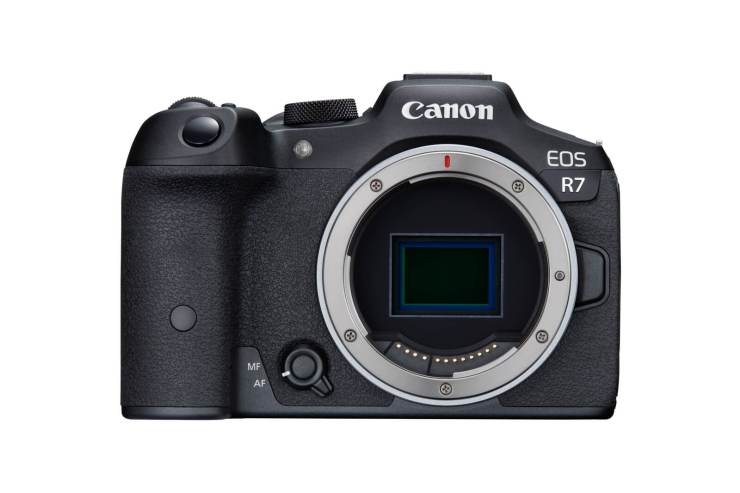
The Canon EOS R7 is essentially a mirrorless version of the Canon EOS 90D. This is no bad thing. The 90D, and other cameras in this line, served as solid prosumer cameras for many years. So, while this isn’t the pro-grade successor to the EOS 7D series we were hoping it would be, the Canon EOS R7 is still a stunner that packs some serious horsepower under the hood. Here’s a look at the specs:
- 32.5 megapixels
- 2.36 million dot EVF
- 1.62 million dot vari-angle LCD
- Autofocus (AF): subject detection inherited from EOS R3
- Up to 15 frames per second (FPS) mechanical shutter, 30 fps electronic shutter
- 7.0 stops of image stabilization
- Dual memory card slots
- Full width 4K video recording at 60p, 30p and 24p
- Record each clip over 30 minutes
- Dust and moisture resistant
For birders, wildlife and sports photographers
.mgl-tiles { display: none; } #mgl-gallery-634ec6f8444e3 { margin: -5px; width: calc(100% + 10px); } #mgl-gallery-634ec6f8444e3 .mgl-box { padding: 5px; } @media screen and (max-width: 768px) { #mgl-gallery-634ec6f8444e3 { margin: -5px; width: calc(100% + 10px); } #mgl-gallery-634ec6f8444e3 .mgl-box { padding: 5px; } } @media screen and (max-width: 460px) { #mgl-gallery-634ec6f8444e3 { margin: -5px; width: calc(100% + 10px); } #mgl-gallery-634ec6f8444e3 .mgl-box { padding: 5px; } }
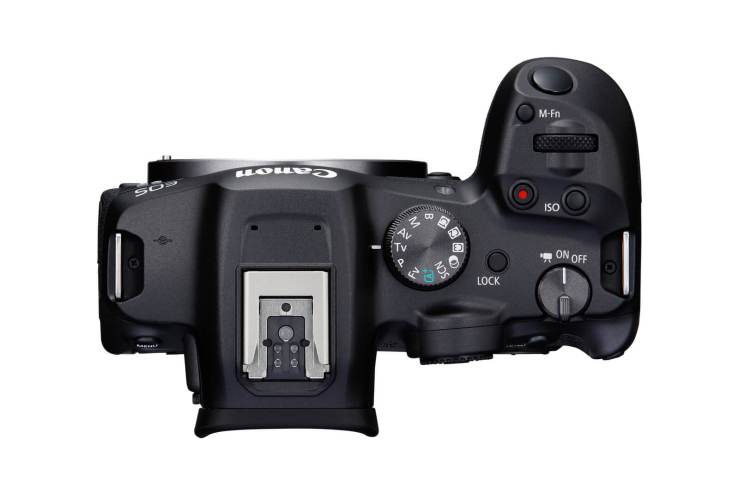
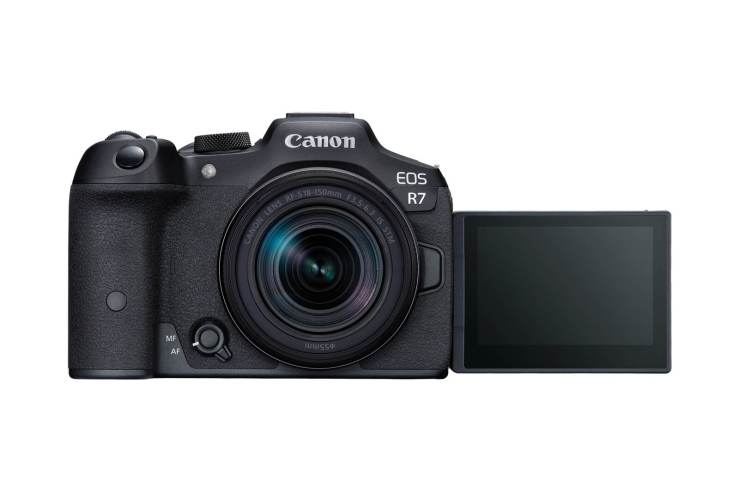
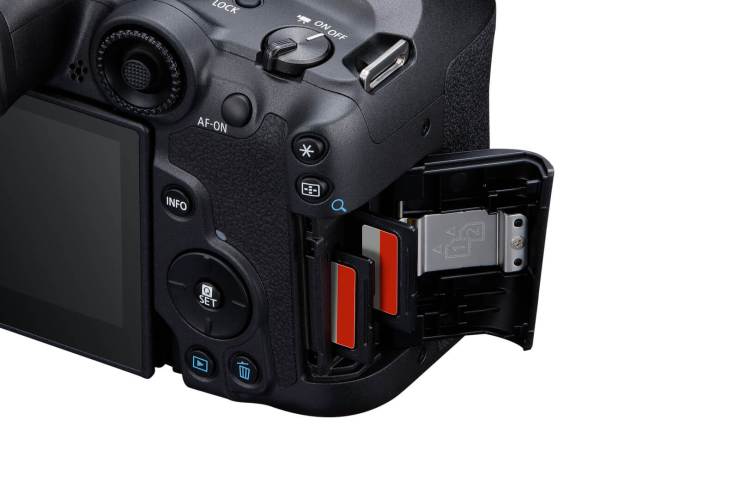
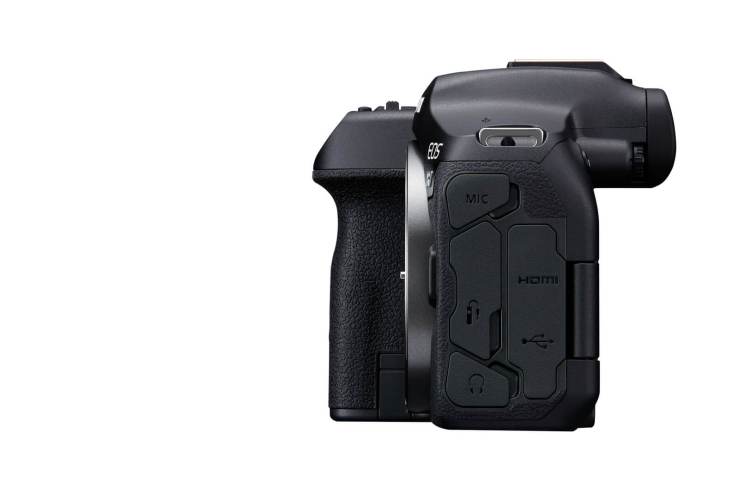
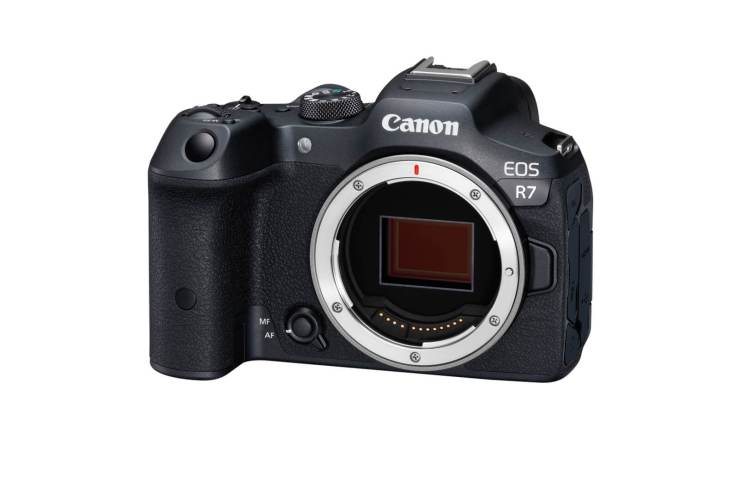
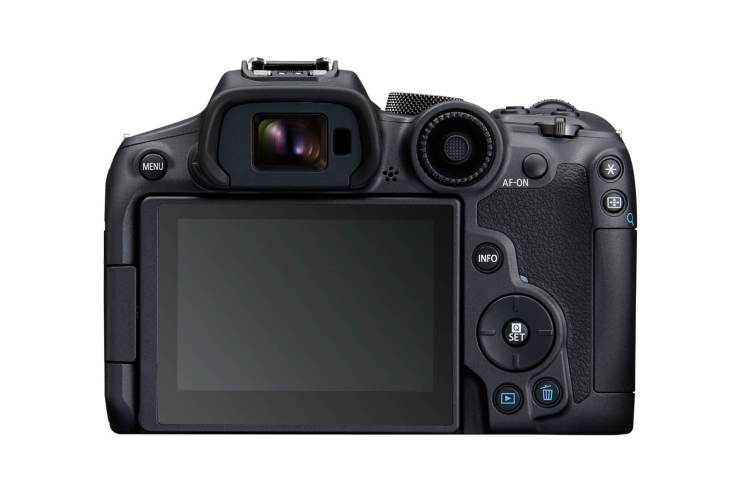
As you can see from the images, the EOS R7 sports a very similar design to that of the Canon EOS R5 and EOS R6. However, the EOS R7 sports a new thumbstick/jog wheel combo that sits to the right of the 2.36 million dot EVF. The R7 is also lighter at just 1.1lbs. Surprisingly, the autofocus system is based on the Canon EOS R3. However, it’s not quite as fast as the R3 but should, in theory, be faster than the R5 and R6.
The Sensor is similar to the one found in the EOS 90D. We’re a little surprised that it’s not backside illuminated. However, this has helped keep costs down. You’ll find a fully articulating 1.62 million dot LCD touchscreen, dual UHS-II card slots, 3.5mm headphone and mic inputs, USB-C, micro HDMI and Canon’s multi-function hot shoe.
The EOS R7 will be available in late 2022 with a retail price of $1,499 for the body only or with the RF-S18-150mm f/3.5-6.3 IS STM lens for $1,899.
PREORDER YOUR CANON EOS R7 NOW
Canon EOS R10
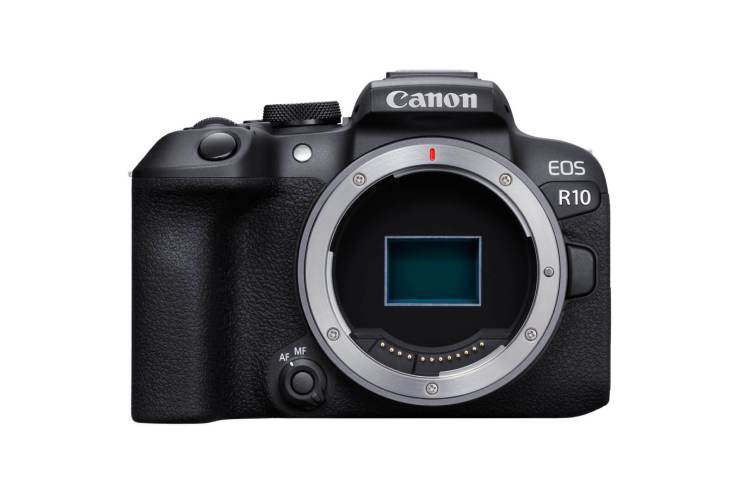
The Canon EOS R10 is almost precisely what we thought it would be. A mirrorless Canon Rebel. Still, don’t let this consumer-grade camera for the masses fool you. Like the EOS R7, the EOS R10 hides a lot of power in a sleeper body. While not as robust as the Canon EOS R7, the EOS R10 looks similar in design. However, it does have a smaller grip, and the new thumbstick/jog wheel has been removed. Let’s look at the specs:
- 24.2-megapixel APS-C sensor
- Autofocus (AF): subject detection inherited from EOS R3
- One UHS-II card slot
- 2.36 million dot EVF
- 1.04 million dot vari-angle LCD
- 4K60 video with an extra crop factor
.mgl-tiles { display: none; } #mgl-gallery-634ec6f84609f { margin: -5px; width: calc(100% + 10px); } #mgl-gallery-634ec6f84609f .mgl-box { padding: 5px; } @media screen and (max-width: 768px) { #mgl-gallery-634ec6f84609f { margin: -5px; width: calc(100% + 10px); } #mgl-gallery-634ec6f84609f .mgl-box { padding: 5px; } } @media screen and (max-width: 460px) { #mgl-gallery-634ec6f84609f { margin: -5px; width: calc(100% + 10px); } #mgl-gallery-634ec6f84609f .mgl-box { padding: 5px; } }
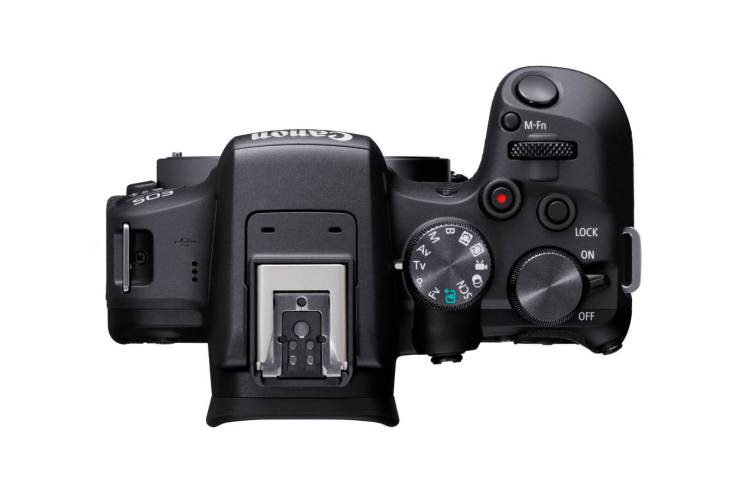
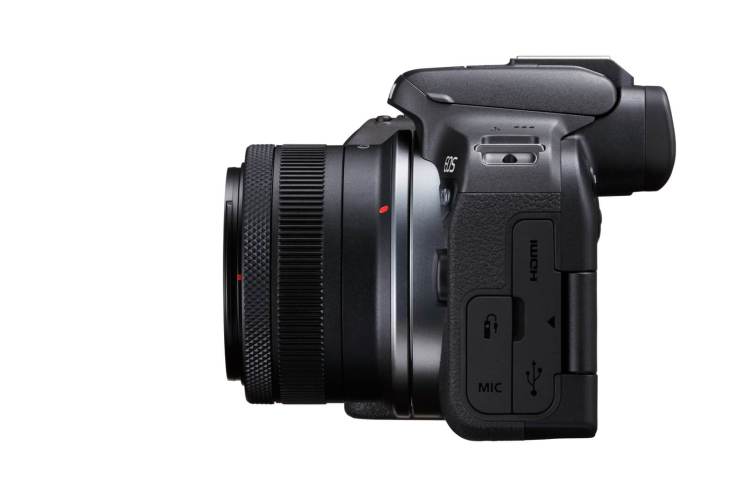
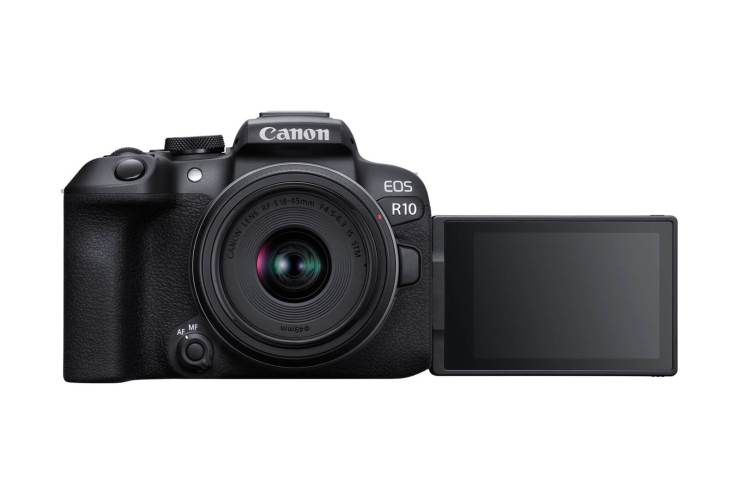
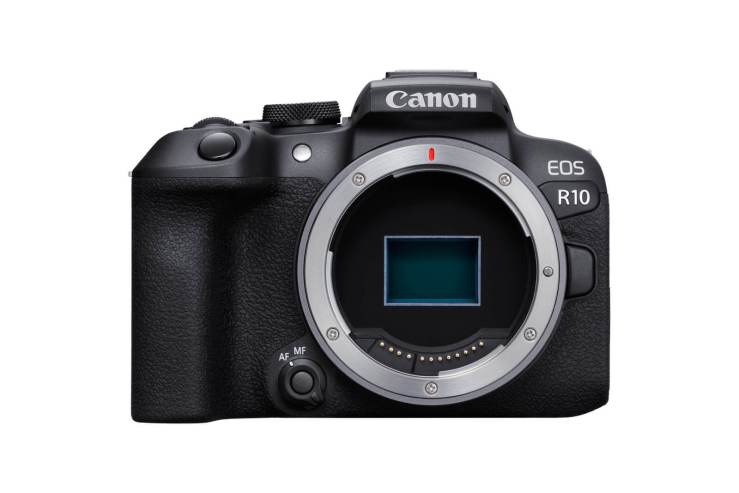
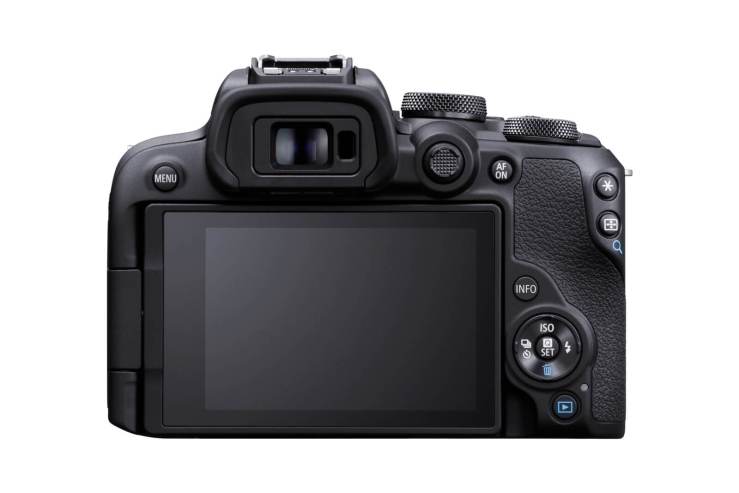
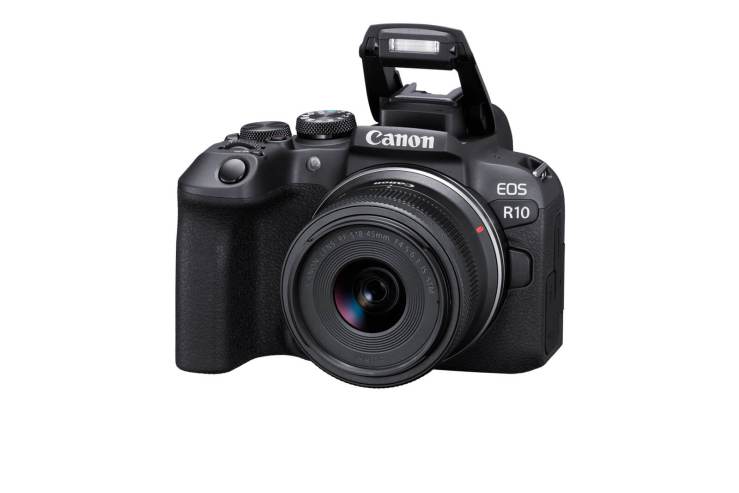
The 24.2 sensor is not backside illuminated, but it should offer plenty for the market it’s going after. The Canon EOS R10 does not feature IBIS nor weather sealing. This is a camera that has been designed to take on entry-level offerings from Sony (a6400), Nikon (Z 50), and Fujifilm (X-T30). Sporting a similar autofocus system as the one found in the EOS R3, the R10 will bring pro-grade autofocus performance to the masses. You’ll notice in the images that the EOS R10 has a pop-up flash and that there are connection ports for USB-C, micro HDMI and a 3.5mm mic jack.
The Canon EOS R10 will have a retail price of $979.99 for the body only. You will also be able to get the EOS R10 in two kits. The EOS R10 with the Canon RF-S 18-45mm f/4.5-6.3 IS STM lens will set you back $1,099, while the EOS R10 with the RF-S 18-150mm f/3.5-6.3 IS STM lens will cost $1,379. All will be available later this year.
PREORDER YOUR CANON EOS R10 NOW
RF-S 18-45mm f/4.5-6.3 IS STM and RF-S 18-150mm f/3.5-6.3 IS STM
Standard Zoom Lenses
.mgl-tiles { display: none; } #mgl-gallery-634ec6f8475f3 { margin: -5px; width: calc(100% + 10px); } #mgl-gallery-634ec6f8475f3 .mgl-box { padding: 5px; } @media screen and (max-width: 768px) { #mgl-gallery-634ec6f8475f3 { margin: -5px; width: calc(100% + 10px); } #mgl-gallery-634ec6f8475f3 .mgl-box { padding: 5px; } } @media screen and (max-width: 460px) { #mgl-gallery-634ec6f8475f3 { margin: -5px; width: calc(100% + 10px); } #mgl-gallery-634ec6f8475f3 .mgl-box { padding: 5px; } }
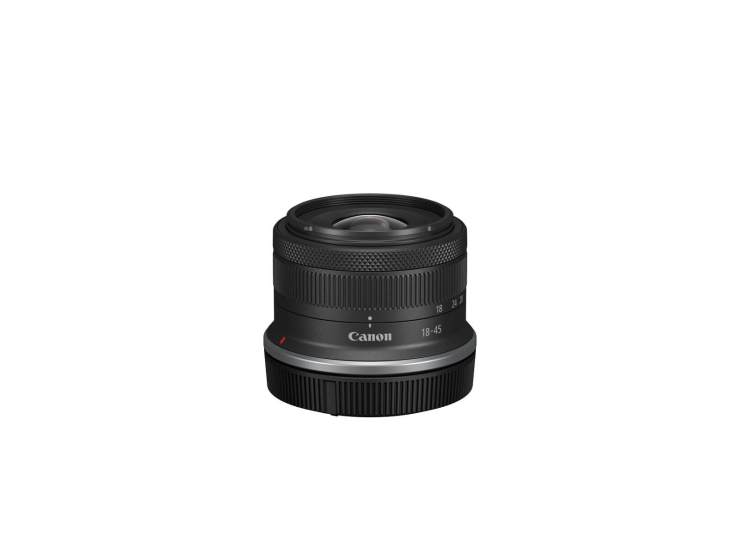
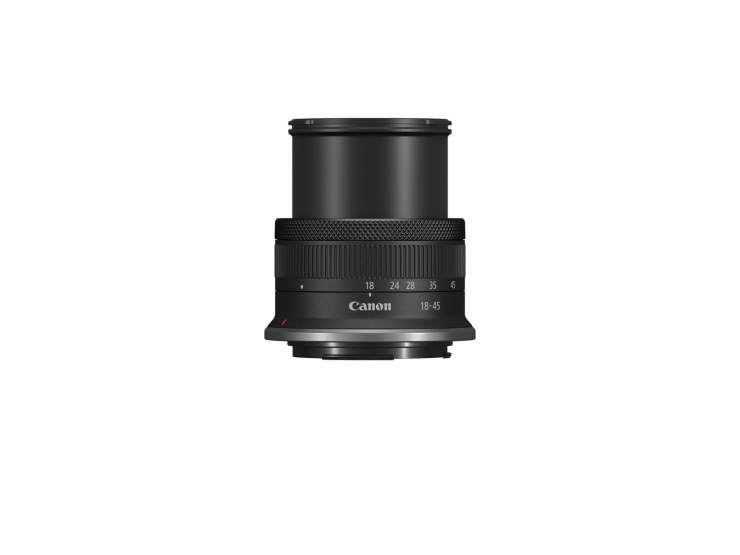
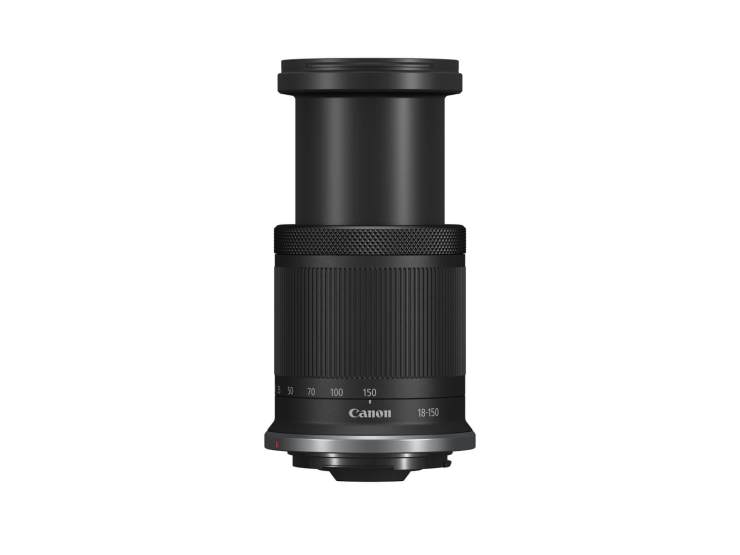
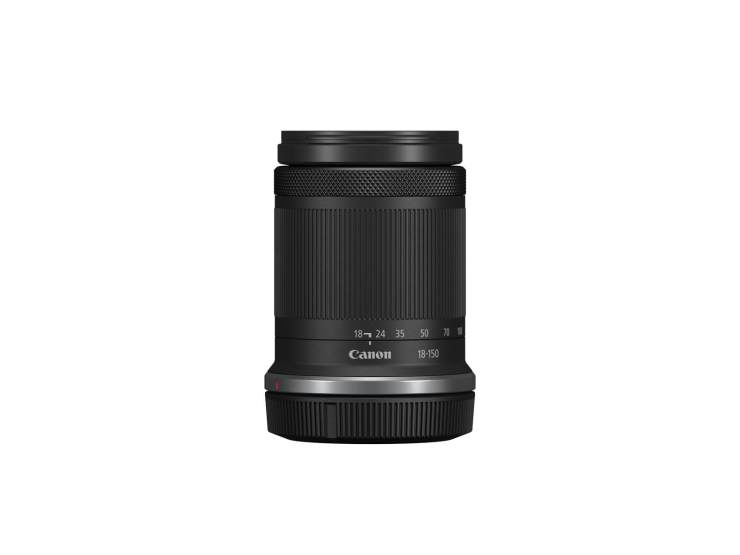
Alongside the camera bodies, Canon will release two RF-S lenses — a series of RF-mount lenses optimized for the smaller APS-C sensors found in the EOS R7 and EOS R10. The RF-S 18-45mm provides an equivalent focal range of 29-72mm, while the RF-S 18-150mm will provide an equivalent focal range of 29-240mm. While not the highest quality lenses, these two offerings will be an excellent way for owners of the EOS R7 and ESO R10 to break into the system. Hopefully, Canon will launch more dedicated APS-C lenses in the future.
Both lenses will be available later in 2022. The RF-S 18-45mm f/4.5-6.3 IS STM will retail for $299.99, and the RF-S 18-150 f/3.5-6.3 IS STM will cost $499.99.
PREORDER THE NEW RF-S LENSES HERE
Tell your story with the second annual Visual Storytelling Conference!
Experience four days of interactive, online training sessions featuring a range of educational content with experienced photographers and content creators. This free event kicks off with a series of technical boot camps to build essential skills, followed by live, online sessions on photography, video, business and social media. Join live from March 10-13, 2022!
